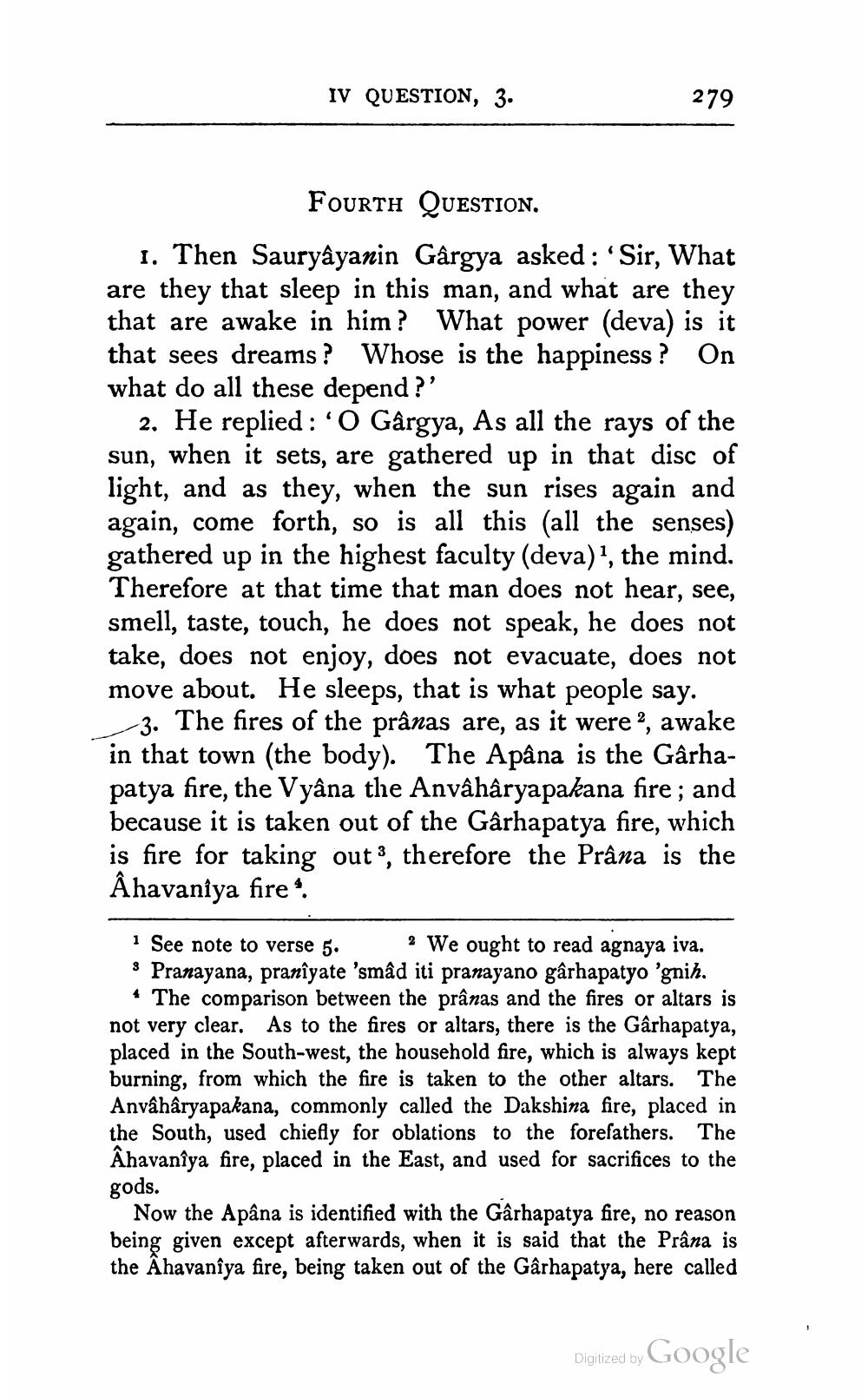________________
IV QUESTION, 3.
279
FOURTH QUESTION.
1. Then Sauryâyanin Gârgya asked: 'Sir, What are they that sleep in this man, and what are they that are awake in him? What power (deva) is it that sees dreams? Whose is the happiness? On what do all these depend?'
2. He replied: 'O Gârgya, As all the rays of the sun, when it sets, are gathered up in that disc of light, and as they, when the sun rises again and again, come forth, so is all this (all the senses) gathered up in the highest faculty (deva)1, the mind. Therefore at that time that man does not hear, see, smell, taste, touch, he does not speak, he does not take, does not enjoy, does not evacuate, does not move about. He sleeps, that is what people say.
3. The fires of the prânas are, as it were 2, awake in that town (the body). The Apâna is the Gârhapatya fire, the Vyâna the Anvâhâryapakana fire; and because it is taken out of the Gârhapatya fire, which is fire for taking out 3, therefore the Prâna is the Âhavaniya fire.
1 See note to verse 5. 2 We ought to read agnaya iva. › Pranayana, pranîyate 'smâd iti pranayano gârhapatyo 'gnih. The comparison between the prânas and the fires or altars is not very clear. As to the fires or altars, there is the Gârhapatya, placed in the South-west, the household fire, which is always kept burning, from which the fire is taken to the other altars. The Anvâhâryapakana, commonly called the Dakshina fire, placed in the South, used chiefly for oblations to the forefathers. The Âhavanîya fire, placed in the East, and used for sacrifices to the gods.
Now the Apâna is identified with the Gârhapatya fire, no reason being given except afterwards, when it is said that the Prâna is the Ahavanîya fire, being taken out of the Gârhapatya, here called
Digitized by
Google




